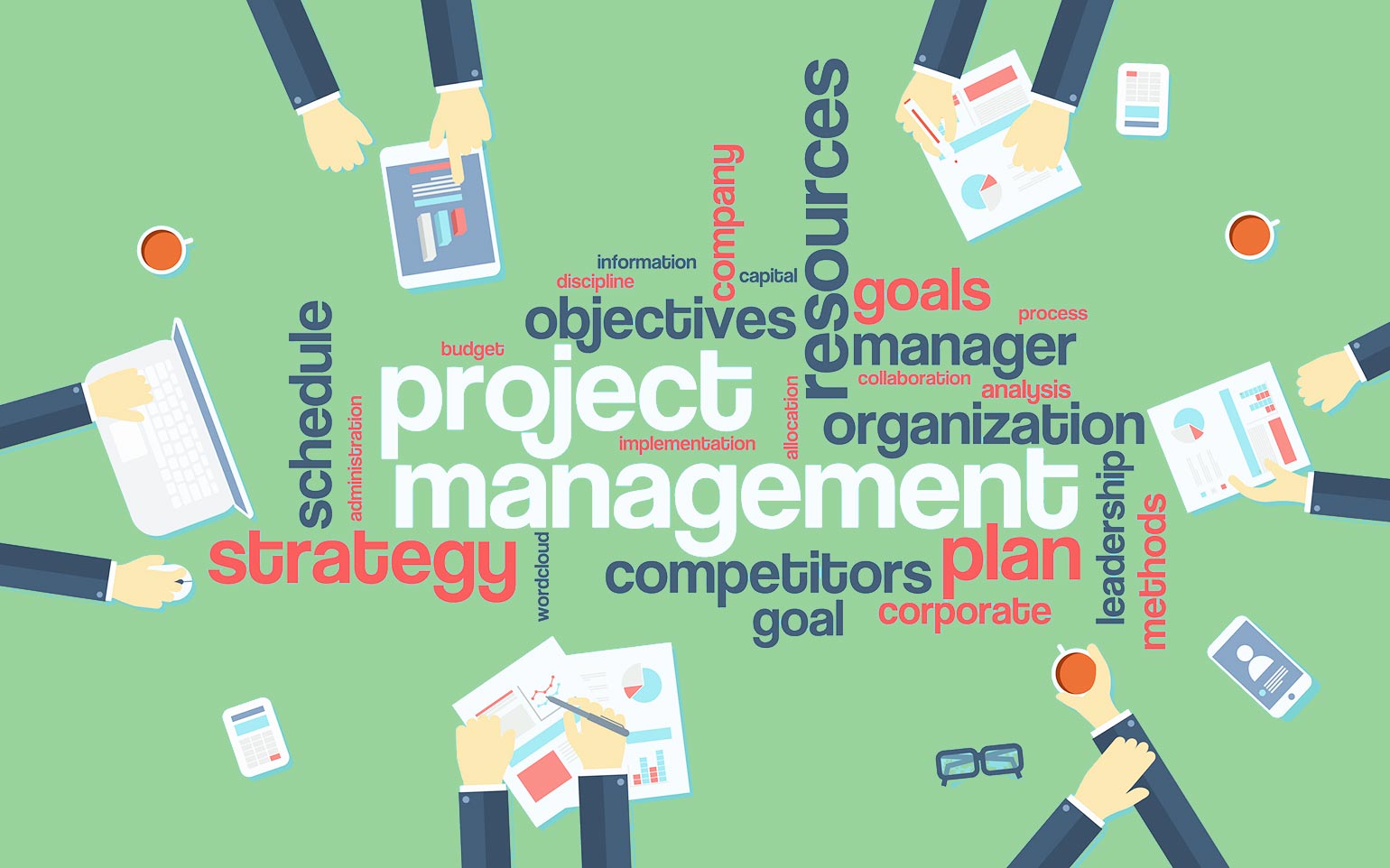I AM BUILDING DIGITAL MACHINES
Hi, my name is Michael Wutzke. I love to design and concept things. That was also the reason why I decided for a technical diploma in machine building when I was 20 years old.
Since then, my love in designing and creating things did not change. But instead of building physical machines like I was intended to do, I am today creating digital machines: applications and websites that work and are successful. I am also experienced in organizing employees, IT systems, and budgets in projects. I work less like a manager, but act strategically as a leader and motivator.

A PRACTISE TO REACH GOALS
No matter where I used to work – finance, real estate, consulting agencies, marketing teams, insurances, software development, or ecommerce -, as a project manager (PM) you are on the front line of projects, defending their teams, clients, and projects from miscommunication, missed deadlines, scope creep, and any other shortcomings.
Project management in IT is very versatile. Most of the IT projects I have overseen are software projects. I am used to champion the well-being of the people involved in my projects and look to make or facilitate strategic decisions that uphold the goals of those projects. As a project manager, you require a fine balance of managing the administrative details of a project and its people. While PMs are often lumped in the “behind the scenes” aspect of project, to be highly effective, they need to be a part of the bigger strategic project conversations.
PMs are not robots. They are not on your team to just take notes and make sure you’re recording your time properly. Yes, they do work in spreadsheets and follow-up on deadlines at a sometimes-annoying rate. In fact, PM might not even have a PM role on your team for several reasons.
There are so many intangible tasks and qualities of project managers that it’s not uncommon for people to not fully understand just what a PM does, and if they need one or not. Here’s the thing: you always need a PM, no matter what. That PM might be a dedicated project manageer, or works normally as an account manager, designer, or developer.
ROLES AND RESPONSIBILITIES
As mentioned, the role and even the title may differ slightly from place to place, but the basics of what a PM will do for a team are fairly consistent (though some may be less formal than others). The role of the project manager encompasses many activities including
- Traditional Approaches
- Agile Methodologies
- Change Management Methodologies
- Process Based Methodologies
- Planning and Defining Scope
- Setting and Managing Expectations
- Crafting Process
- Analyzing and Managing Risks and Issues
- Monitoring and Reporting Project Status
- Team Leadership
- Creating Project Plans
- Managing Tasks
- Resource Planning
- Time/Cost Estimating
- Strategic Influencing
- Facilitating Communications and Collaboration
- Planning and Facilitating Meetings
One of the biggest problems a project manager faces is having a solid understanding of what each team member does on a daily basis.
— Michael Wutzke
FIND THE RIGHT WAY
There is no single way to run all projects. You’ll find that most organizations spend a lot of time making mistakes and adjusting their process in order to get it just right, only to find that when they thought it was “just right” it needed to be tweaked again. Factors like changing business needs and goals, new or different staff and expertise, evolving or new technology are often among reasons why processes have to change. But what’s most important is that an organization or team have a basic framework for how projects operate.
As you research project management processes, you will find that most models identify three basic phases (with varying names, tasks, and deliverables) to organize activities:

BENEFITS OF PROJECT MANAGEMENT
There are so many intangible tasks and qualities of project managers that it’s not uncommon for people to not fully understand their worth. The benefits of any role seem to come down to perception, but a bulk of a PM’s work is “behind the scenes,” so how can you demonstrate the benefits? First, it starts with the individual. Each and every PM should know their role and their worth and follow-through on being a good PM for their teams. Second, it comes down to the organization. A PM will not thrive in an organization that does not value the role and see the benefits of it. And, lastly, the benefit of having a PM on a team is realized by the people who work with them. If they are not bought in, the PM will have a hard time helping.
Some people see the benefits of having a PM on a team, and others don’t. And that is okay–sometime just having someone on a smaller team to handle logistics and communications is enough. That’s right, you don’t always need a PM, but you do need someone who will handle PM tasks. If simply stating that managing tasks and communications can provide more time to team members to collaborate and create isn’t enough to sell you on the value of project manager.
HAVING A PLAN AND BEING AGILE
Independent of how you manage a project, at its core, the project plan defines the approach and the process the teams will use to manage the project according to scope. This is important because every project needs a plan and a roadmap; not only does it go a long way toward keeping teams honest in terms of scope and deadlines, a plan communicates vital information to all project stakeholders. If you approach it as something more than a dry document and communicate it to everyone involved, the plan can and will be seen as integral to your project’s success. The fact is, a plan is more than dates. That’s why a plan comes first, agile methods comes second.
Agile methodologies are based on the mindset that self-organizing software development teams can deliver value through iteration and collaboration. In such respect, I am used to work and administer agile projects using software like Jira and Confluence. Furthermore, I have the official certification as Professional Scrum Master. Since I was was regularly communicating with customers and partners, I also know how a product owner thinks.
MY PROJECT MANAGEMENT SKILLS
Effective project managers for IT-driven projects need more than technical know-how. The role also requires a number of non-technical skills, and it is these softer skills that often determine whether a project manager — and the project — will be a success. IT project managers are mostly allrounders, because IT projects can be very versatile. Most people, when we they talk about IT project management, we mean software project management.
Here are a few key characteristics of a project manager:
Leaders are innovators who are always looking to improve ways of doing things and challenging the processes in order to improve the team’s productivity level. On the other side, project managers are skilled in following processes. Hence, project managers tend to accept the status quo and continue to do things the way they have been done.
But what also applies: Leaders tend to look for challenges. Challenges lead to new ideas and improvements in the current processes. As innovation and leading have been part of my proven track record, I am skilled to lead a team.
Successful project managers continuously develop leadership skills in motivating and inspiring teams. They practice effective human resource management processes for team development.
That’s why motivating colleagues and team members is crucial to meet goals any plan. I have managed to meet expectations in such a field in my recent projects.
As a result, communication is a vital element of a well-managed project and expressing its needs. There are two main groups of people with whom the project manager needs to ensure clear and effective communication, the stakeholders and the project team.
Having attended multiple communication seminars and successfully managed a variety of projects, I consider myself an open and strong communicator.
The five phases of the project management process are:
- Identify and assess business opportunity
- Select from alternatives
- Develop preferred alternative for full funding
- Execute (detail design, procurement and construction)
- Operate and evaluate
I have created project management plans and processes over a period of more than 10 years.
Whether the problem you are focusing on is small or large, using a systematic approach for solving it is helping me to be a more effective project manager. The following approach defines five problem solving steps you can use for most problems:
- Defining the problem
- Determining the causes
- Generating ideas
- Selecting the best solution
- Taking action
Such steps helped me to manage teams of up to 20 people working on projects.
Whether the problem you are focusing on is small or large, using a systematic approach for solving it is helping me to be a more effective project manager. The following approach defines five problem solving steps you can use for most problems:
- Defining the problem
- Determining the causes
- Generating ideas
- Selecting the best solution
- Taking action
Such steps helped me to manage teams of up to 20 people working on projects.
Effective prioritization is as much an art as a science. These steps can help:
- Making the project schedule visible to everyone
- Creating a project backlog (for example using Jira)
- Knowing the business and the market
- Giving project tasks a finish date
- Account for uncertainty in the schedule
- Learning how to predict incoming priority shifts
- Drawing the line between urgent and important tasks
- Always plan ad-hoc tasks
I have managed projects in the past according to such methods. This helped me to manage projects effectively, increased productivity, and helped to raise the morale of the team. As a result, people who worked together with me knew that our work really made a difference!
DID YOU EVER ...
… ask yourself how bad project management looks like? One that does not exist or is performed in a poor way. No matter if you have a dedicated project manager for it or if project management duties are taken care of by other team members.